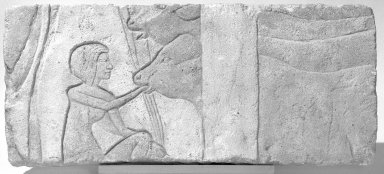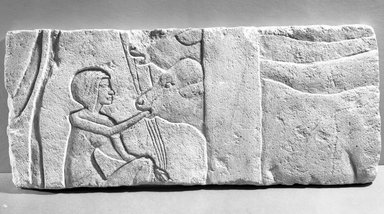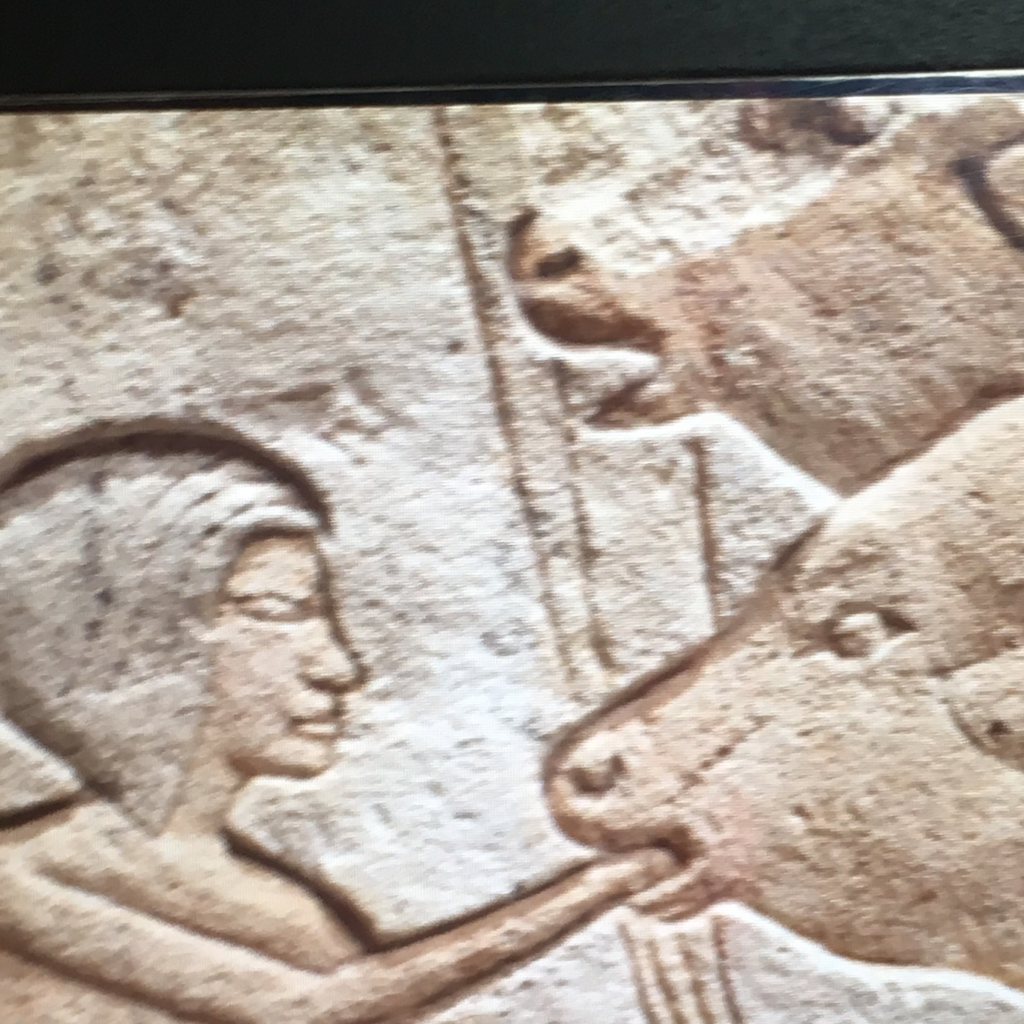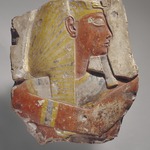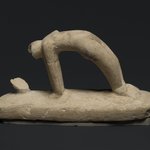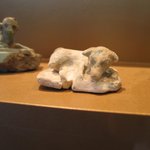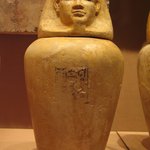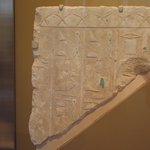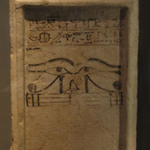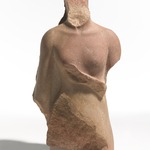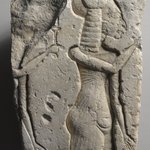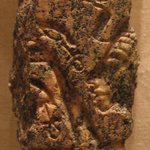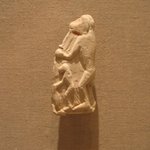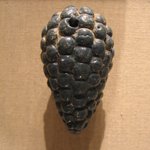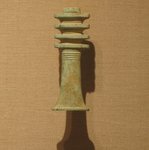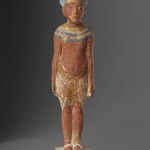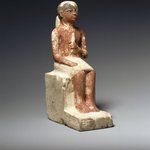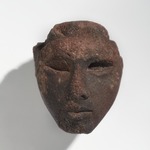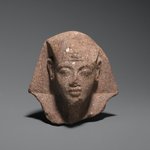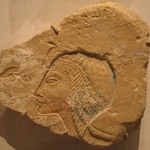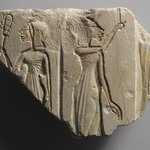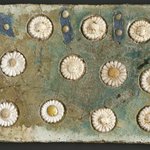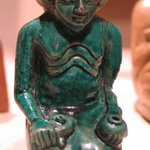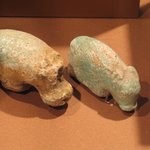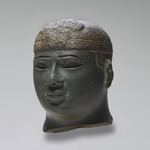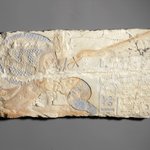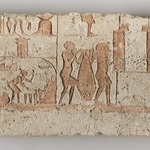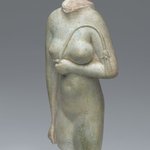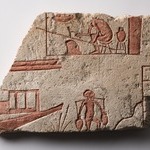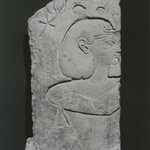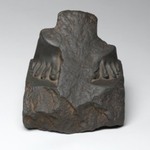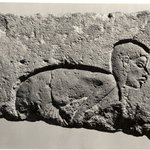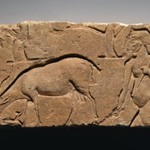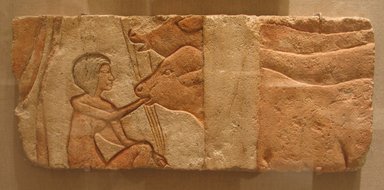

Feeding Calves, ca. 1352–1336 B.C.E. Limestone, pigment, 9 1/16 x 21 1/4 in. (23 x 54 cm). Brooklyn Museum, Charles Edwin Wilbour Fund, 60.197.4. Creative Commons-BY (Photo: Brooklyn Museum, CUR.60.197.4_wwg7.jpg)
Feeding Calves
Egyptian, Classical, Ancient Near Eastern Art
On View: Amarna Period, Martha A. and Robert S. Rubin Gallery, 3rd Floor
One of the most unusual scenes of daily life from el Amarna, this block depicts a herdsman thrusting his hand down the throat of a tethered cow. He may be force-feeding the animal or helping it digest its food. Above the cow we can see traces of three more animals and, at the far left, part of a much larger bovine, perhaps the mother cow.
MEDIUM
Limestone, pigment
GEOGRAPHICAL LOCATIONS
- Place found: Hermopolis, Egypt
- Place made: Tell el-Amarna, Egypt
DATES
ca. 1352–1336 B.C.E.
DYNASTY
late Dynasty 18
PERIOD
New Kingdom, Amarna Period
DIMENSIONS
9 1/16 x 21 1/4 in. (23 x 54 cm) (show scale)



COLLECTIONS
Egyptian, Classical, Ancient Near Eastern Art
ACCESSION NUMBER
60.197.4
CREDIT LINE
Charles Edwin Wilbour Fund
CATALOGUE DESCRIPTION
Limestone relief. In sunk relief to the right, four oxen behind support (?) of a shelter. Seated male attendant feeding (? forcibly) the front ox and holding the lead ropes. At extreme left, hind quarters and tail of standing ox. Wig of man black, his body and oxen a brown-red.
Condition: Edges chipped. Paint worn.
EXHIBITIONS
MUSEUM LOCATION
This item is on view in Amarna Period, Martha A. and Robert S. Rubin Gallery, 3rd Floor
CAPTION
Feeding Calves, ca. 1352–1336 B.C.E. Limestone, pigment, 9 1/16 x 21 1/4 in. (23 x 54 cm). Brooklyn Museum, Charles Edwin Wilbour Fund, 60.197.4. Creative Commons-BY (Photo: Brooklyn Museum, CUR.60.197.4_wwg7.jpg)
IMAGE
installation, West Wing gallery 7 installation, CUR.60.197.4_wwg7.jpg. Brooklyn Museum photograph, 2005
"CUR" at the beginning of an image file name means that the image was created by a curatorial staff member. These study images may be digital point-and-shoot photographs, when we don\'t yet have high-quality studio photography, or they may be scans of older negatives, slides, or photographic prints, providing historical documentation of the object.
RIGHTS STATEMENT
Creative Commons-BY
You may download and use Brooklyn Museum images of this three-dimensional work in accordance with a Creative Commons license. Fair use, as understood under the United States Copyright Act, may also apply.
Please include caption information from this page and credit the Brooklyn Museum. If you need a high resolution file, please fill out our online application form (charges apply).
For further information about copyright, we recommend resources at the United States Library of Congress, Cornell University, Copyright and Cultural Institutions: Guidelines for U.S. Libraries, Archives, and Museums, and Copyright Watch.
For more information about the Museum's rights project, including how rights types are assigned, please see our blog posts on copyright.
If you have any information regarding this work and rights to it, please contact copyright@brooklynmuseum.org.
RECORD COMPLETENESS
Not every record you will find here is complete. More information is available for some works than for others, and some entries have been updated more recently. Records are frequently reviewed and revised, and we welcome any additional information you might have.
